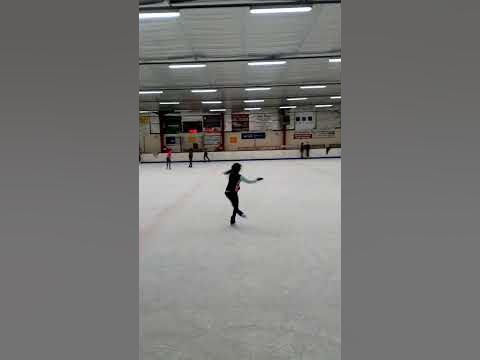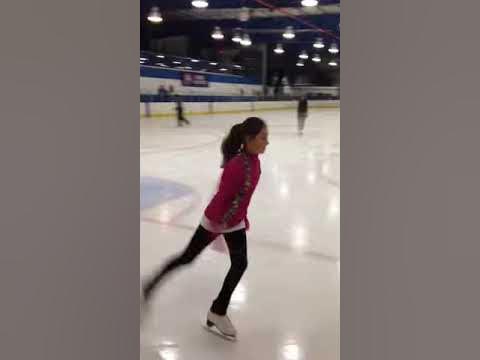The jumps are defined/named by the takeoff edge, whether or not there is a toepick assist, and whether the direction of rotation in the air is the same or opposite to the direction of the takeoff edge.
All standard jumps land on a back outside edge on the foot that curves in the same direction as the in-air rotation.
The air position has nothing to do with the definition of the jump.
It is possible to do the same jump with different air positions. If you do a jump as defined by the takeoff but use an unusual air position, you are doing a variation of the standard jump, not a completely different jump.
If you do the same jump with a non-standard landing, you are doing a variation of the same jump, not a completely different jump.
Some of these variations have their own names (e.g., Euler which is only ever done as a single jump), but usually they are named according to the standard jump with that takeoff, and then some additional words to describe what's different about them (e.g., "one-foot double salchow; delayed axel; split-flip). Most of these variations are never or very very rarely performed with multiple revolutions. If a variation is very very rare, a skater who does perform it would get attention for being creative and likely for doing something extra difficult, but the name of the jump would be the same as the standard version from that takeoff -- with extra words explaining the variation.
For the last 50 years or so it has been accepted that the best way to rotate multirevolution jumps is to get into the "backspin in the air" position. All coaches teach that basic position now, although they may have some variations. If you look at some early examples of jumps by skaters who pioneered the triples before that position had become standard, you may see some different air positions (e.g., Dick Button's 3Lo, Donald Jackson's 3Lz), and various doubles in the 1970s and earlier by lower level skaters who would not have been on TV and not been able to learn triples.
The main differences in how one gets into that position are between jumps for which the last foot to leave the ice is the landing foot (BO edge of the landing foot for the loop; pick of the landing foot for flip and lutz) or whether the foot that leaves the ice last is the non-landing foot (from the FO edge for the axel, BI edge for the salchow, or toepick of the non-landing foot for the toe loop). In the latter cases there needs to be a weight shift in the air and you can usually see the free leg swinging through at/right after the takeoff before that shift into the rotational position.
But if a skater takes off from a standard takeoff without a visible leg swing or with a nonstandard air position before or instead of getting into that backspin in the air position, or without a visible H position before pulling into the rotational position, that does not mean they're doing a different jump. They would just be using an unusual technique, which is generally not a good idea if they're doing triples or quads.
It is possible to jump off some different edges, at least for single jumps -- you may have heard of jumps such as walley, toeless lutz, inside axel -- but these are very difficult or impossible to do with multiple revolutions and so became less common as doubles, triples, and later quads
became more important. The ISU did not include these takeoffs in the IJS scale of values. They have already been invented but they're only done as transitional moves (single walleys are not that rare) or not really worth doing at all in the current scoring. They are also identified by their takeoffs, presence or absence of toe pick at takeoff, and rotation the same or opposite to the curve of the takeoff edge.
If you're trying to learn about how to identify the multirevolution jumps you see in today's skating, you shouldn't worry about those rare takeoffs that don't lend themselves to multiple revolutions.
And if you're trying to learn to understand the six basic kinds of jumps that are commonly used as triples and quads, you need to start focusing primarily on takeoff edges and worry less about air positions.
All standard jumps land on a back outside edge on the foot that curves in the same direction as the in-air rotation.
The air position has nothing to do with the definition of the jump.
It is possible to do the same jump with different air positions. If you do a jump as defined by the takeoff but use an unusual air position, you are doing a variation of the standard jump, not a completely different jump.
If you do the same jump with a non-standard landing, you are doing a variation of the same jump, not a completely different jump.
Some of these variations have their own names (e.g., Euler which is only ever done as a single jump), but usually they are named according to the standard jump with that takeoff, and then some additional words to describe what's different about them (e.g., "one-foot double salchow; delayed axel; split-flip). Most of these variations are never or very very rarely performed with multiple revolutions. If a variation is very very rare, a skater who does perform it would get attention for being creative and likely for doing something extra difficult, but the name of the jump would be the same as the standard version from that takeoff -- with extra words explaining the variation.
For the last 50 years or so it has been accepted that the best way to rotate multirevolution jumps is to get into the "backspin in the air" position. All coaches teach that basic position now, although they may have some variations. If you look at some early examples of jumps by skaters who pioneered the triples before that position had become standard, you may see some different air positions (e.g., Dick Button's 3Lo, Donald Jackson's 3Lz), and various doubles in the 1970s and earlier by lower level skaters who would not have been on TV and not been able to learn triples.
The main differences in how one gets into that position are between jumps for which the last foot to leave the ice is the landing foot (BO edge of the landing foot for the loop; pick of the landing foot for flip and lutz) or whether the foot that leaves the ice last is the non-landing foot (from the FO edge for the axel, BI edge for the salchow, or toepick of the non-landing foot for the toe loop). In the latter cases there needs to be a weight shift in the air and you can usually see the free leg swinging through at/right after the takeoff before that shift into the rotational position.
But if a skater takes off from a standard takeoff without a visible leg swing or with a nonstandard air position before or instead of getting into that backspin in the air position, or without a visible H position before pulling into the rotational position, that does not mean they're doing a different jump. They would just be using an unusual technique, which is generally not a good idea if they're doing triples or quads.
It is possible to jump off some different edges, at least for single jumps -- you may have heard of jumps such as walley, toeless lutz, inside axel -- but these are very difficult or impossible to do with multiple revolutions and so became less common as doubles, triples, and later quads
became more important. The ISU did not include these takeoffs in the IJS scale of values. They have already been invented but they're only done as transitional moves (single walleys are not that rare) or not really worth doing at all in the current scoring. They are also identified by their takeoffs, presence or absence of toe pick at takeoff, and rotation the same or opposite to the curve of the takeoff edge.
If you're trying to learn about how to identify the multirevolution jumps you see in today's skating, you shouldn't worry about those rare takeoffs that don't lend themselves to multiple revolutions.
And if you're trying to learn to understand the six basic kinds of jumps that are commonly used as triples and quads, you need to start focusing primarily on takeoff edges and worry less about air positions.













